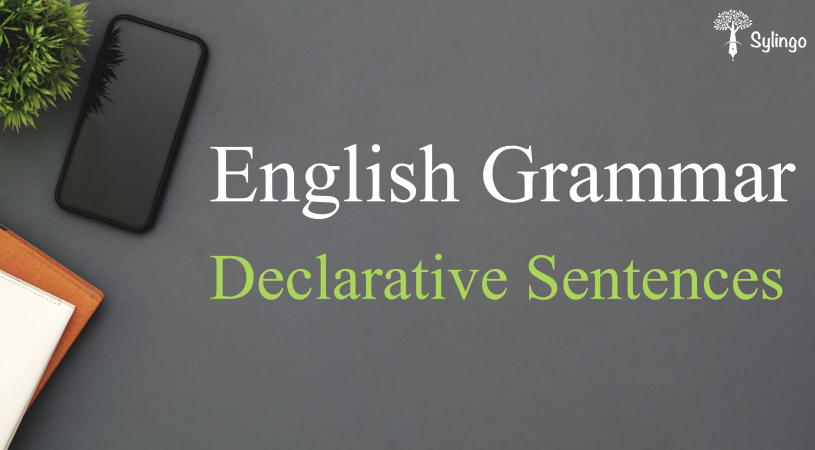Forming sentences and knowing the elements of a sentence are essential in all languages because they are the basis for speaking and writing.
Sentences types
1- Declarative Sentence
2- Interrogative sentence
3- Imperative sentence
4- Exclamatory sentence
Declarative Sentence
It gives information that may be fact or opinion. It begins with a capital letter and ends with a period. It can be either a positive or negative sentence.
Example: I cross the street.
Types of declarative sentences
1- Simple declarative sentence:
The structure of a simple declarative sentence is a subject, a verb, and a complement to the sentence that may be an object or an adjective.
Subject + verb + complement
Examples:
|
It was a rainy day. |
|
He is a lawyer. |
|
My mother works. |
2- Compound declarative sentence:
The structure of a compound sentence consists of two simple sentences separated by a comma, semicolon, or conjunctions.
Examples:
|
He plays piano, but she plays guitar. |
|
I worked for five years, and you worked for three. |
|
We love playing in the park, yet we have homework today. |
Sentence elements
The elements of a sentence in English are the subject, the verb, and the object or the complement.
1- Subject: It can be anything that refers to a person, thing, or place, but grammatically it is either a noun, a pronoun, or a noun phrase.
- Noun: It can be a proper or common noun, such as (Zayn, Cats, or The people), and it can be singular or plural.
- Pronoun: Like subject pronouns. It can be one pronoun, such as (you), or several pronouns, such as (he and I).
- Noun phrase: A group of words that act as a subject, examples:
|
The little girl. |
|
Your house. |
2- Verb: There are three types of verbs
- Main verb: It can be an intransitive verb that does not need an object or a transitive verb that needs an object.
- Linking verb: It links the subject with a noun or an adjective to give more description and information about the subject.
- Auxiliary verb: It comes before the main or linking verb in a sentence. Modal verbs such as (can, will, must and should) are also auxiliary verbs.
Negation
It is transforming a sentence to give the opposite meaning of the sentence. There are two ways to negate:
1- If there is an auxiliary verb (be - modals) in the sentence, we add the word (not) after the auxiliary.
Examples:
|
She is a student. |
She isn’t a student. |
|
We are playing. |
We are not playing. |
|
You were in Spain. |
You weren't in Spain. |
|
He was working. |
He was not working. |
|
I can speak English. |
I cannot speak English. |
|
They will travel. |
They will not travel. |
2- If there is no auxiliary verb in the sentence, we add the auxiliary (do - does - did) and then add the word (not) after the auxiliary.
Examples:
|
He works in a hospital. |
He does not work in a hospital. |
|
They run in the morning. |
They don’t run in the morning. |
|
I slept early. |
I did not sleep early. |
Notes:
1- We use the auxiliary (do) with sentences in the present tense with the pronouns (I - you - we - they) or something similar.
2- We use the auxiliary (does) with sentences in the present tense with the pronouns (he - she - it) or something similar.
3- We use the auxiliary (did) with sentences in the past tense with all the pronouns.
4- The verb after (do - does - did) is in the infinitive.
That is all about declarative sentences. If you have any questions or suggestion, you can share them in the comments section below.
Exercise:
Put the words in the correct order to form a declarative sentence.
1- plays/ in/ he/ the garden
2- and/ are/ I/ friends/ Jasmin
3- five/ you/ old/ are/ years
4- is/ girl/ sitting/ the/ there/ blonde
5- to/ we/ Italy/ traveled
Answers
1- He plays in the garden.
2- Jasmin and I are friends.
3- You are five years old.
4- The blonde girl is sitting there.
5- We traveled to Italy.





